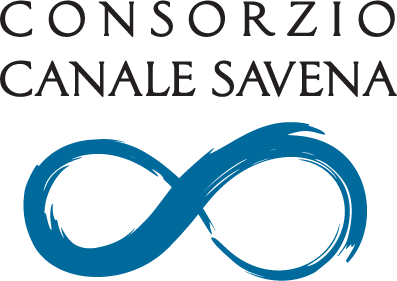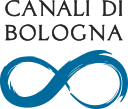Consorzio della Chiusa di San Ruffillo e del Canale di Savena

History
The Consorzio della Chiusa di San Ruffillo e del Canale di Savena is a body whose origin dates back to the beginning of the 18th century. It was established in its present form in 1885 with the purpose of distributing the water derived from the Savena stream for irrigation, filling different tanks and reservoirs, industrial uses (production of motive power, heat exchangers) and environmental uses, and also draining water from the area upstream of the Savena canal, acting as a natural gutter.
The administrative headquarters of the consortium is currently located in Via della Grada 12 in Bologna, together with the Consorzio della Chiusa di Casalecchio e del Canale di Reno and the Consorzio degli Interessati nelle Acque del Canale di Savena. The headquarters for water management is also in Bologna in Via Toscana 186. Management is ensured by the Board of Delegates composed of 15 members representing the entire body of interested parties. The consortium members meet every two years in the General Assembly for the election of their representatives. A Board of Directors consisting of nine members and a chairperson is elected within the Board of Delegates.
Together they carry out the ordinary management of the consortium. No compensation is paid to persons holding consortium administrative offices. Only members of the consortium called Interested Parties become members of the administrative bodies. The consortium is made up of all the owners of buildings who in any way use the water derived from the Savena stream or use the consortium canal. The income used to achieve statutory purposes comes solely from consortium contributions, without any external financing.
By carrying out the function of distributing water to the various consumers, maintaining a constant flow in a network that is intimately connected to the surrounding community, disposing of excess water in the event of particular adverse weather, the consortium manages the water of the entire area connected to its artificial system. To fulfil this task it preserves and maintains the efficiency of the waterworks within its purview (not owned by the State) and divides the related maintenance costs among all the interested parties.
There are numerous peculiarities that distinguish the Consorzio della Chiusa di San Ruffillo e del Canale di Savena from other organisations. The waterworks managed are part of the consortium's assets and are not the property of the state, the municipality or HERA Group. The area of responsibility is exclusively urban and the activity linked to agriculture is marginal, even though the agricultural area depending on water derived from the San Ruffillo Dam is quite significant.
Historically the focus has been on industrial use, while the function of acting as a natural gutter has become increasingly important with the greater level of urbanisation, making the waterworks' ability to ensure the disposal of both external water (streams, runoff) and internal water (spillways) even more critical. Not less important is the service of maintaining good environmental conditions in the surrounding area. Notwithstanding the waterworks' long history, the consortium has adapted over time to the changing needs of the area and the different demands of the people who live and work there. A full restructuring of the derivation was completed, both in terms of civil and mechanical works. In the three-year period 2015-2017 functional, historical and architectural conservation projects have been carried out and the electronic system of the flow management works has been completely checked. One example of how environmental factors have always been taken into consideration is that the rainwater can be kept separated from sewerage, thus achieving both a containment of the derived water and better operation of the treatment plant (IDAR), both factors that facilitate the reuse of wastewater, thereby contributing to the improvement of the environment.
The area affected by the water system derived from the San Ruffillo Dam can be divided into three compartments. The one upstream of the city, overlooking the Savena canal, is the catchment area. It uses the network as a natural gutter, collecting the rainwater that for the most part does not drain into the sewerage system. This area is also defended by external water, i.e. the ancient streams or runoff transformed into collectors that flow into the canals. It is precisely the consortium's water management that guarantees a balance in the area served, eliminating any excess water thanks to the works it maintains and supervises. The middle compartment consists of the so-called internal urban network, including the area to the right of the Aposa and the perimeter of the ancient city walls, and serves to feed the numerous conduits constituting the capillary micro waterworks in Bologna managed by the Consorzio degli Interessati nelle Acque del Canale di Savena. Finally, there's the valley compartment, i.e. the northern area that is still primarily used for irrigation. In fact, the water leaving the city joins the water derived from the Reno river, and together they feed the Navile and Savena Abbandonato system and their pipelines.
The area managed by the consortium still has some active users (heat exchangers). The water wheel built on the site where the former Panigada paper mill was located is now used solely for educational purposes. The hygienic-environmental function carried out by the Savena canal both above ground and below is of paramount importance for the surrounding urban area. Irrigation needs have dropped considerably due to the high level of urbanisation of the last decades.
A peculiarity of this canal is the possibility of supplying water to the two streams in the area: the Cavallina trench and the Grotte stream. This action is carried out based on the needs of the natural watercourses so as to maintain water efficiency.
The drainage area served, called a district, is between the line of the hill watershed and the canal that forms a gutter which receives runoff from rainwater, road and roof water as well as sewerage spillways. Irrigation is limited to the few agricultural areas left, surrounded by the growing city.
Governing bodies
Chairman
Maurizio Mattei
Board of Delegates
Representatives of the consortium members
Consisting of 15 members
Adele Bassi
Valerio Boschi
Pietro Buccarelli
Adriana Giamperoli
Antonio Lelli
Giovanni Manaresi
Maurizio Mattei
Michele Monti
Dimissionario
Christine Nardini
Marco Pedrazzi
Paolo Pupillo
Mauro Querzè
Giuseppe Venturoli
in attesa di designazione
Board of Directors
Composed of 9 members
Selected from among the 15 Managing Directors
Adele Bassi
Adriana Giamperoli
Antonio Lelli
Giovanni Manaresi
Maurizio Mattei
Michele Monti
Dimissionario
Paolo Pupillo
Mauro Querzè
Secretary
Andrea Bolognesi








